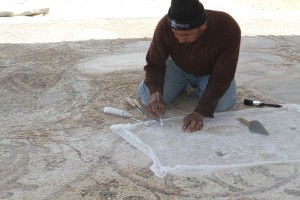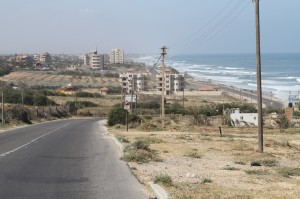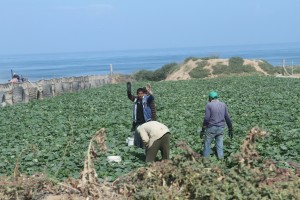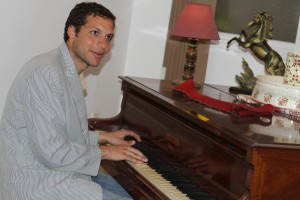Gaza on a day of rest and prayer, by Gerri Haynes
(Gerri Haynes, a former president of Washington Physicians for Social Responsibility, is once again sending back reports from inside blockaded Gaza. As she did four times before, Gerri has organized a team of doctors and other health care providers to work in hospitals and clinics in Gaza in an effort to directly help the people there and to bring attention to the ongoing humanitarian crisis that the Israeli blockade has created. Fourth in the series.)
Friday, the day of rest and prayer – hospital clinics and operating rooms are closed. Our friends and their friends joined us as we toured the Strip in a bus – witnessing the beauty and the extreme challenges of this place. Home to 1.7 million people, the 25 mile-long Gaza Strip has some of the most densely populated areas on our planet. Its coastline is lovely – the possibility of a major recreational area is impossible to miss. But flowing into the sea each day are hundreds of thousands of gallons of partially or fully untreated sewage. In places, the strong smell of sewage permeates the air, filling our bus with the awareness that all is not well. At Wadi Gaza (the River Gaza), we see once again the dead body of a large animal – horse or camel – decaying in the sewage near the road – part of the detritus on its way to the sea.On this trip, we were treated to a visit to an archeological dig site – discovered during a road excavation about 17 years ago, in what was a Roman, then Christian, then Muslim area. UNESCO is in charge of the work done here and lovely mosaic tile floors are being carefully restored. When UNESCO recognized Palestine as a state last September and the United States cut funding to UNESCO, the budget for this restoration was decreased, but funding from other countries continued and the work here goes on.
As we traveled south, increased agricultural areas were evident. Approximately 1/3 of the prime agricultural land of Gaza is near the eastern border with Israel and Israel has deemed that land to be in the “security corridor” – crop development there is forbidden so agriculture in other, less fertile areas is increasing. Lack of water is a constant problem. Israel has installed wells along the eastern border and pumps out water that might flow underground to replenish the water supply to Gaza. The increasing population of Gaza demands water, and the aquifer on the western side of the land is being over-used. Seawater is contaminating the water supply – affecting the irrigation of crops as well as water for consumption. UNRWA reports that 90 – 95 percent of the water in Gaza is polluted and unsafe for drinking.In some areas, garbage has been cleaned from the streets – still, the presence of trash along most roads seems to reflect the desperate condition of life here. We saw many closed gas stations and were told again that the amount of fuel for cars, electricity, cooking, and industry has been recently reduced. Because taxes from Gaza have been withheld by the government of Gaza from payment to the Palestinian government in Ramallah and subsequently from
payment to Israel for fuel, only a small amount of fuel is entering Gaza from Israel. Taxes on fuel that comes through the illegal tunnels from Egypt have been substantially increased by Egypt and denied by the government of Gaza. The amount of fuel entering Gaza is insufficient. Fuel that does come through the tunnels contains lead and its use adds danger to the development of children.At the end of our tour, we were treated to magnificent music – piano and song by Ramzy Suleiman, Palestinian American from Washington, D.C. who now lives in Gaza and teaches music at the Edward Said School of Music. The beauty of his music reflected the beauty of the natural land and the wonderful people of Gaza – reminding us that hope for a more just and peaceful future remains.
RSS feed for comments on this post. TrackBack URI




